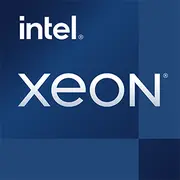Intel Xeon E-2286M

Intel Xeon E-2286M: Power and Reliability for Professionals
April 2025
In the world of mobile processors, Intel Xeon has always been associated with reliability and performance for professional tasks. The Xeon E-2286M model, introduced in 2019, remains relevant in the high-end workstation and business laptop segments. Let’s explore who this CPU is suitable for in 2025 and what benefits it offers.
Architecture and Technology Process: Coffee Lake at 14 nm
The E-2286M processor is built on the Coffee Lake microarchitecture using a 14 nm technology process. Although Intel has long since moved to 10 nm and 7 nm (in hybrid models), 14 nm remains a stable platform for the enterprise sector.
- Cores and Threads: 8 cores and 16 threads. Base frequency — 2.4 GHz, maximum in turbo mode — 5.0 GHz for a single core and 4.4 GHz for all cores.
- Integrated Graphics: Intel UHD Graphics P630 with a base frequency of 350 MHz and a maximum of 1.25 GHz. Supports 4K displays and hardware acceleration for video encoding/decoding (HEVC, VP9).
- Cache: 16 MB SmartCache.
Architecture Features:
- Support for ECC memory (Error-Correcting Code) — a key feature of Xeon to prevent errors in critical tasks.
- Virtualization (VT-x, VT-d) — important for developers and IT infrastructure.
- Intel vPro — technology for remote management and security of corporate devices.
Power Consumption and TDP: 45 W — Balance or Compromise?
The TDP (Thermal Design Power) of 45 W indicates that the processor is intended for laptops with robust cooling systems — workstations or "thick" business models.
- Heat Dissipation: Under load (e.g., rendering), temperatures can reach 95–100°C, which requires high-quality heat pipes and fans.
- Power-Saving Modes: Intel Speed Shift (fast frequency switching), dynamic voltage management (DVFS). In idle mode, the frequency reduces to 1.2 GHz, lowering power consumption to 10–15 W.
Performance: Real-World Tasks and Turbo Mode
According to Geekbench 6 (1535 — single-core, 6753 — multi-core), the E-2286M in 2025 competes with modern mid-range CPUs but lags behind high-end 5 nm models.
- Office Work: Utilization of 10–20% while working with documents, browsers (20+ tabs), and video conferencing. No lags even during multitasking.
- Multimedia:
- 4K video rendering in Premiere Pro: 8-core load reduces export time by 30% compared to 6-core CPUs.
- Working in Blender (Cycles): 16 threads allow processing of medium-level scenes in 5–7 minutes.
- Gaming: Integrated P630 graphics are weak for AAA projects. In Dota 2 (Full HD, low settings) — 40–50 FPS. A discrete graphics card (e.g., NVIDIA RTX 3050) is essential for gaming.
- Turbo Mode: During short-term loads (launching applications, code compilation), the frequency can rise to 5.0 GHz, but throttling occurs after 30–60 seconds due to overheating.
Use Cases: Who Needs the Xeon E-2286M?
1. Engineers and Designers: CAD applications (AutoCAD, SolidWorks) require stable multi-threaded performance and ECC memory.
2. Developers: Compiling large projects, virtualization (Docker, VMware).
3. Analysts: Processing Big Data in Python/R.
4. Corporate Users: Security (vPro) and remote management.
Not Suitable For:
- Gamers (without a discrete GPU).
- Users who value battery life (see below).
Battery Life: The Price for Performance
Laptops with the E-2286M rarely run longer than 4–5 hours under moderate load (web surfing, office). The reason is the high TDP and the lack of modern energy-efficient cores (as seen in Intel's 12th generation hybrid CPUs).
Energy-Saving Technologies:
- Intel Dynamic Tuning: Automatically limits performance when running on battery.
- Ultra Low Power States: Deep sleep for peripheral components.
Advice: Choose models with a battery of at least 90 Wh (e.g., Dell Precision 7550) — this can extend usage time to 6–7 hours.
Comparison with Competitors: AMD, Apple, and Others
- AMD Ryzen 9 6900HX (2022, 6 nm, 8 cores/16 threads):
- Higher performance in multi-threaded tasks (+15% in Cinebench R23).
- Better integrated graphics (Radeon 680M).
- No support for ECC memory.
- Apple M2 Pro (2023, 5 nm, 10 cores):
- 40% more energy-efficient.
- Higher single-threaded task speed.
- Incompatibility with Windows software.
- Intel Core i9-11980HK (2021, 10 nm, 8 cores/16 threads):
- Similar performance, but lacks ECC and vPro.
Conclusion: The Xeon E-2286M falls behind in speed and energy efficiency but excels in reliability for the corporate sector.
Pros and Cons
Strengths:
- Support for ECC memory and vPro.
- Stability under prolonged loads.
- Good scalability in multi-threaded tasks.
Weaknesses:
- Outdated 14 nm technology process.
- High heat dissipation.
- Weak integrated graphics.
Laptop Selection Recommendations
- Device Type: Workstation (Dell Precision, HP ZBook) or business laptop (Lenovo ThinkPad P15).
- Cooling: At least two fans and four heat pipes.
- Additional:
- Discrete graphics card (NVIDIA RTX A2000 or equivalent).
- 32+ GB DDR4 with ECC.
- 2 TB NVMe SSD.
Examples of 2025 Models:
- Dell Precision 7670: From $2500.
- HP ZBook Fury 16 G9: From $2800.
Final Conclusion
The Intel Xeon E-2286M is a choice for those who prioritize reliability over peak performance. It is an ideal CPU for:
- Corporate workstations with security requirements.
- Engineering tasks utilizing ECC memory.
- Users who value stability more than battery life.
If you need a laptop for on-the-go rendering or gaming, consider models with Ryzen 9 or Intel 12th generation processors. However, for business and professional environments, the Xeon E-2286M remains a reliable solution even in 2025.
Basic
CPU Specifications
Memory Specifications
GPU Specifications
Miscellaneous
Benchmarks
Compared to Other CPU
Share in social media
Or Link To Us
<a href="https://cputronic.com/en/cpu/intel-xeon-e-2286m" target="_blank">Intel Xeon E-2286M</a>